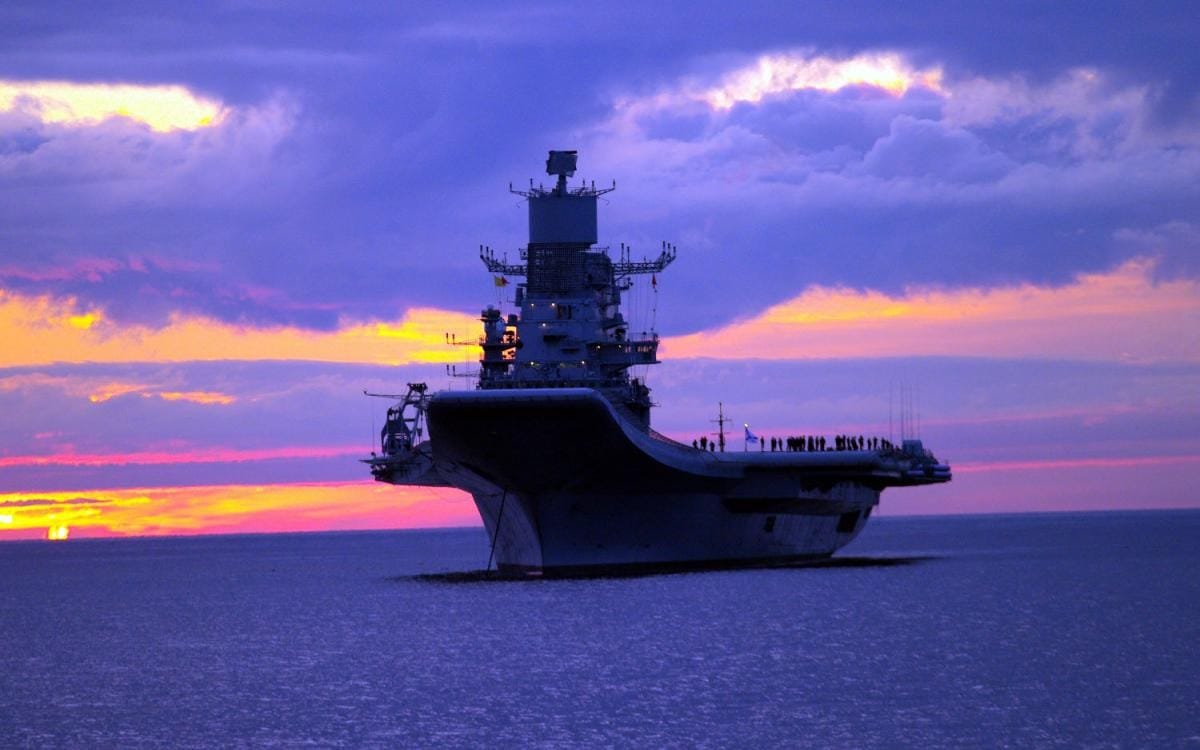A new aircraft carrier arms race is underway – and it doesn’t involve the United States or even a European power.
Rather, India’s first domestically-build carrier, INS Vikrant, is nearing completion and could soon begin sea trials. This comes as the Chinese People’s Liberation Army Navy (PLAN) currently has two carriers in service while a third is under construction, and other Asian nations are looking to also build flattops.
Aircraft carriers remain symbols of prestige and power for the navies across the world, so it isn’t surprising that New Delhi would seek to enlarge its carrier fleet, especially as China has upped its game.
The Indian Navy already operates the Russian-built INS Vikramaditya, and could soon join the proverbial “league of nations” that is able to operate more than a single carrier. Two carriers could also be especially vital to New Delhi should it find itself in a war with China or Pakistan.
Not a Carrier Newcomer
Among the Asian countries, the Indian Navy has the most experience in terms of naval aviation. H I Sutton, writing for NavalNews.com, noted earlier this month that the Indian Navy’s strong tradition of carrier aviation dates back to the Cold War, and India has operated fixed-wing aircraft carriers continuously since 1957, surpassed only by France and the United States. Even the Royal Navy has had gaps where it operated no carriers.
The fact that India’s next carrier won’t be “hand-me-down” from a European power is also noteworthy. INS Vikrant, which successfully passed the basin trails at the Cochin Shipyard Limited (CSL) in Kochi late last year, has been seen as a testament to Indian Prime Minister Narendra Modi’s “Aatmanirbhar Bharat” – “self-reliant India” – policy.
At 260 meters long and 60 meters wide, she is the largest warship ever built in India. Her maximum speed is reported to be 28 knots, and the carrier has a range of 7,500 nautical miles at a speed of 18 knots. The carrier is set to receive a large crew complement composed of 160 officers and 1,400 sailors. The STOBAR (Short Take-Off But Arrested Recovery) aircraft carrier will be able to accommodate up to thirty fighters and helicopters, including Mig-29K fighters jets and Ka-31 helicopters.
According to reports, the Indian Navy has also considered adopting the F/A-18E/F Super Hornet and Dassault’s Rafale-M, while New Delhi has been developing an indigenous fighter under its Twin-Engine Deck Based Fighter (TEDBF) program.
India’s new carrier won’t be the largest in the world by any means. At 45,000 tons, the first domestically produced carrier in the subcontinent will only be around sixty-seven percent of the size of the PLAN’s two operational carriers, which each displace around 65,000 tons. However, according to Sutton despite its smaller tonnage, Vikrant is otherwise comparable in terms of capabilities to China’s first two carriers, Liaoning and Shandong.
“Although the construction of the Indian and Chinese ships overlaps, in many respects the Indian carrier is a generation newer in design. Design of Vikrant started in 1999 while the Chinese ships are rooted in 1970s Soviet technology,” Sutton wrote and added that the Chinese vessels are essentially Soviet-designed Admiral Kuznetsov-class carriers.
Shandong may have been built in China, but it has been seen as little more than a modification of the Liaoning, which Beijing had originally purchased from Ukraine, ostensibly for scrap.
China’s experience with carrier operations is much younger than India’s, but the PLAN is catching up quickly, and it is a race that India doesn’t want to lose. Yet, New Delhi may have an advantage in that China has many regional rivals that are also entering the carrier race.
Japan and South Korea will soon become carrier powers, and while those respective carriers will also be smaller than China’s each will reportedly operate with the Lockheed Martin F-35B Lightning II. Additionally, France and the United Kingdom have made it clear their carriers could soon be operating in Asian waters alongside the United States. Given that those countries have stronger relations with New Delhi than Beijing could further tip the scales in India’s favor – even as it continues to build up its own domestically-built navy.
Peter Suciu is a Michigan-based writer who has contributed to more than four dozen magazines, newspapers, and websites. He regularly writes about military small arms and is the author of several books on military headgear including A Gallery of Military Headdress, which is available on Amazon.com.

